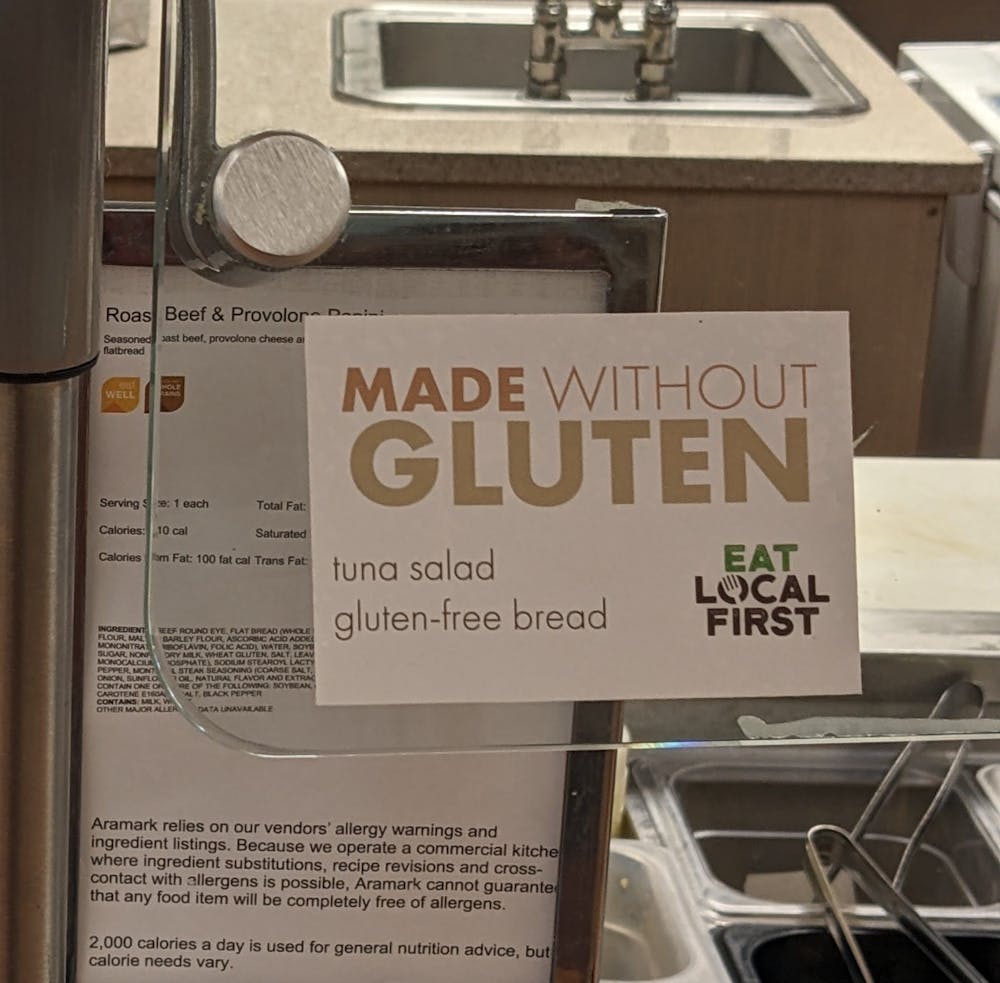Many students rely on the dining halls at Western Washington University for meals while in school. However, students with food allergies can struggle to find accommodating options.
When deciding where to eat, students with food allergies must consider ingredients, cross-contamination and whether there will be allergen-free options.
Jazz Bressler, a second-year student at Western, said they struggled to find accommodations for their lactose intolerance while at the dining halls.
“There were very few options for me, which was my biggest problem,” Bressler said. “I ended up eating burgers pretty much every day because that was one of the few options that was consistently there and did not have dairy.”
However, eating the meals marked dairy-free did not stop them from experiencing allergy symptoms, Bressler said.
“I don’t know what it was, but I was clearly still eating things with dairy even though I was trying hard not to,” Bressler said. “I was definitely still sick every single day.”
Western’s dining halls label meals that contain the nine most common allergens, said Jeremy Honey, the general manager at Aramark Collegiate Hospitality. These are soy, eggs, milk, fish, wheat, shellfish, tree nuts, peanuts and sesame.
On Aramark’s Campus Dish website, students are told to reach out for personalized help with their food allergies.
This help includes meeting with a registered dietician nutritionist who helps navigate the dining locations, said Honey. Then, the student and RDN work with the executive chef to create a meal plan.
“Individual menu development and specially prepared foods can be provided when the daily offerings do not meet the student’s dietary needs or as a result of their food allergy,” Honey said.
The RDN will actively follow up with a student to check in after some time has passed, said Honey.
Since allergens are present in the dining hall, students with severe food allergies must consider cross-contamination and airborne allergens when eating there.
Students should ask questions about the ingredients and surfaces used to prepare food, said Darcie Hill, an RDN and part of Western's Faculty and Staff Wellness Program.
“Don’t forget to ask about sauces, seasonings, etc. Those sauces can be sneaky, especially if you have a soy or sesame allergy,” Hill said.
Avoiding an allergic reaction is not the only concern of students with food allergies. Students must figure out how to meet their nutritional needs with limited options.
Students can still meet all their nutritional needs while avoiding the major allergens, said Hill.
“Eat as varied a diet as possible,” Hill said. “Make sure to incorporate all macronutrients – fat, carbohydrates, protein – because each of those has different micronutrients and phytonutrients that help support health and immune function.”
The dining hall is a common social experience in college. The lack of options can make students feel isolated. It is important for students to shift their focus from what they can not have.
“Focus on all the delicious and nutritious foods you can enjoy,” Hill said. “Your perspective, appreciation and relationship with food will likely shift accordingly.”
Jenna Millikan (she/her) is a city news reporter for The Front this quarter. She is a third-year student majoring in journalism with a minor in political science. When not reporting, she enjoys cheesy movies, reading and drinking too much coffee.
You can reach her @jennamillikan.thefront@gmail.com






